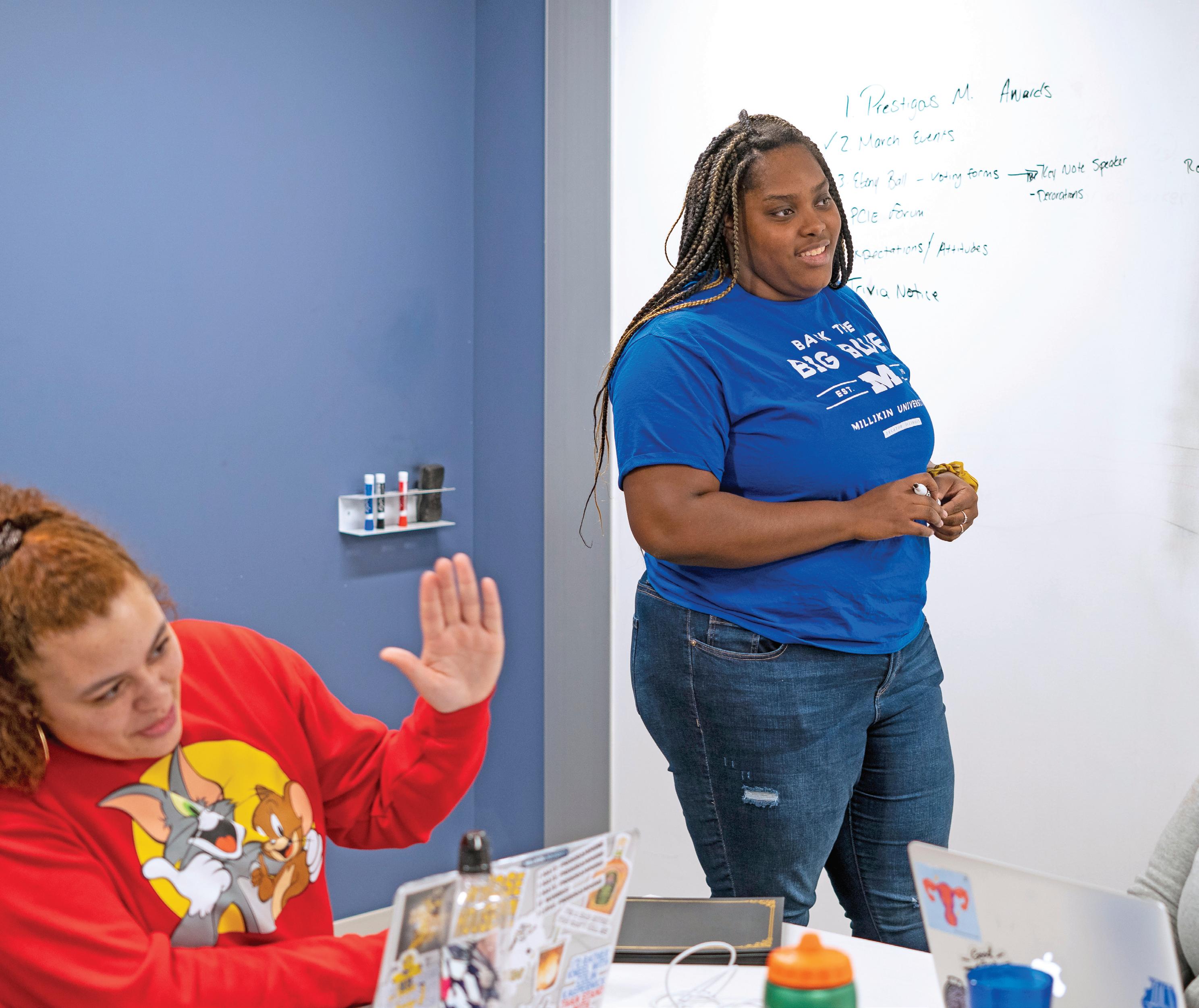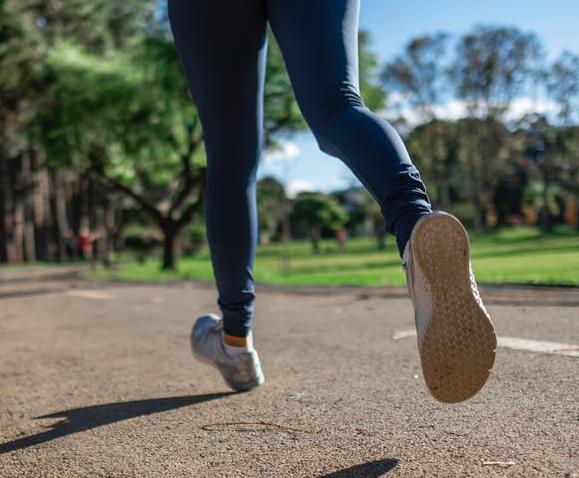
9 minute read
Social Change on Social Media
The iGeneration is fighting for connection, conversation, and change—all online.
By Sydney Sinks
Advertisement
Social media dominates our culture and has revolutionized how our generation interacts with the world. Snapchat, Instagram, Facebook, and Twitter offer ways to connect with others. We learn to see different viewpoints, develop meaningful relationships, and orchestrate entire campaigns and protests. We’re pushing ideas and political movements through internet cables.
Society labels young people as the iGeneration for a reason. We grew up with smartphones and the internet, and we were entering grade school when Mark Zuckerberg became a household name. Social media sites have only expanded since that time. Before, people seemed hesitant to join Facebook. Now, you may receive a strange look if you tell someone you aren’t on multiple sites.
Of course, detriments accompany the social media boom. But our newly technological world also poses some real benefits. Social media is all about connection, and far-reaching positives result from connecting with other people, ideas, and social movements. When we use social media to interact with others, we expose ourselves to new beliefs and ideas. We catch a glimpse of different religious traditions and political opinions. In short, we see the world even if we don’t actually leave our corner of it.
Young people benefit substantially from the exposure. It’s hard to determine your own beliefs when you only hear or read the opinions of people around you who are most likely similar to you. We can access different ideas and viewpoints online that we might not encounter in our normal interactions with teachers and parents. The expansion can prove helpful for young people trying to establish their unique identities. By learning about the world, we begin to understand our place within it.
Finding Support Real people exist at both ends of the internet cables, and we can develop genuine friendships via social media. These connections can give us the confidence and support we might not find in “real” life. Social media can serve as a refuge from some of the stress we deal with offline, and it can introduce us to others who understand.
When you are struggling, you may feel you’re the only person in the world who has endured your difficult situation, especially if you don’t know anyone who has experienced it. But by talking with people on social media, you start to realize this isn’t the case. Facebook support groups, Instagram pages, and Twitter hashtags connect people who are struggling. Through these platforms, you can access individuals in the same situation and share resources and advice with one another. It offers you support. When you watch your new friends overcoming challenges, it gives you hope.
This kind of support becomes especially important for people belonging to underrepresented communities. For example, a queer teenager who lives in a conservative area can find a constructive environment online. They can discover resources and meet people who accept them as they are, and they can also obtain a glimpse of a future more wonderful than they can imagine under their present circumstances. The same remains true for those facing mental health obstacles, questioning their gender identity, or trying to manage traumatic experiences.
Social media can represent an extremely empowering force to connect people and assist them in recognizing they are not alone.
Millikin University sophomore Jacqueline Freed has experienced the advantages of social media networking firsthand. Along with her sister, she operates an Instagram account, @painfreed, that supplies information and support for those dealing with Ehlers-Danlos Syndrome (EDS). Most of their followers consist of people who suffer from EDS or other chronic pain disorders. Although Freed
FEATURES felt hesitant to join the account initially, she soon realized the page enabled her to talk to people who understand. Conversations happen on Instagram that might not occur in Freed’s “real” life. “Sometimes it’s hard to talk to other people about the pain you’re going through,” says Freed. “People don’t understand that, but this community does. So you feel like you can explain your issues a little better because they understand a little better.”
Freed’s outlet grew especially helpful during finals week when she sprained her wrist. Not only was she in pain, but she also struggled to type essays and complete assignments while wearing a splint. After sharing these difficulties on her Instagram account, followers surprised her by commenting with their advice to relieve pain. Some of them even suggested resources she could reference to make doing homework easier. Moments like this one remind Freed that people understand and support her.

Advocating for Change While social media can facilitate a connection on a personal level, it also can aid in the orchestration of entire social justice movements. With a few taps on a phone, it’s possible to disseminate information across the globe. We can educate others about social issues, resources, and movements using the functions on social media sites. By using social media to generate support and education, we plan revolutions in revolutionary ways and change the world. #MeToo, #BlackLivesMatter, #MarchForOurLives—all these phrases have been trending hashtags on Twitter. They also have functioned as the battle cries of people who feel sick of the world and want to change it.
And the universe is paying attention. People spend a lot of time on social media, and they notice the material appearing on their newsfeeds. These hashtags connect relevant posts and people. Users can easily learn more about what’s happening, and they can decide what role they will play in the activity. Online movements make headlines, but more than that, they pave the way for genuine change. By sharing ideas across social media, we push people to learn more and take action.
In May 2019, Millikin University students witnessed the capabilities of social media for themselves when a protest broke out over the treatment of African American students. The
protest, dubbed “Ah, Where Are You Millikin?,” was organized by campus leaders through GroupMe. Organizers spread the word by posting about the protest on their social media pages. By the next morning, they had generated a crowd of roughly thirty students who marched across campus with posters, chants, and demands that Millikin University take action. “Our goal was to show that, for underrepresented students, we are here, and our school isn’t showing up for us like we want,” says student JaCarla Anderson.
Anderson experienced how social media influenced people during the protest, but she was already familiar with the power of technology. As the president of Millikin’s Black Student Union (BSU), she constantly advertises and advocates—all from her phone. But she acknowledges the limitations of social media as well. She comprehends the permanence of her posts, and she stays conscious of the wording she uses online.
Even though the utilization of social media presents its downsides, Anderson continues to take advantage of the rewards. Airdropping fliers to people in the University Commons, for example, is one of her most effective advertising techniques. According to
her, this strategy is one of the best ways to attract attention and promote action. “I think social media is very prominent in this generation,” Anderson says. “I think it’s pretty big, and you get most of your news from social media, right? So why not go to the platform that everybody uses and everybody knows about?”
Engaging Beyond the Local Beyond Millikin, countless movements and conversations have started online. It can be difficult to see what’s taking place outside our own communities, and social media gives a closer look into what’s happening and how we can help. For instance, a human rights crisis occurred in Sudan in June 2019, but the ordeal lacked considerable mainstream media coverage. Instead, civilians and activists reported on the crisis via social media. The hashtag #StayStrongSudan circulated throughout Instagram and Twitter, and people shared details about what was happening and how to provide assistance. People around the world could pool their knowledge and resources by retweeting. Messages about the crisis saturated my newsfeed, and I learned about the massacre and the political environment in a way I wouldn’t have if I relied solely on news channels. I was able to see what was happening and learn about the causes, and I could even extend resources and support—all through social media.
Beyond education about social issues, social media allows people to push for change. Social media movements have revamped the conversation around major
contemporary issues because much of the discussion takes place online. By clicking on a hashtag, you can find recent information about a movement and stay up-to-date on the dialogue surrounding it—a more fast-paced and interactive dialogue than ever before. Sharing, retweeting, and commenting functions allow people to lend their voices to the discourse, and the opportunities have resulted in a more complete and evolving understanding of social issues and movements.
I knew the internet could facilitate communication, but I was never involved directly until my senior year of high school when the March for Our Lives movement spread across the internet. My friend and I decided we were going to protest, and we wanted to encourage as many of our classmates as we could to join us. On March 13, 2018, my friend posted a Snapchat story inviting students to join him in the walkout planned across the nation on March 14. With a couple of clicks, I shared his post to my own story. By that night, most people I knew had shared it, and hundreds of people had seen the invitation to participate. The next day, when we filed out of our classrooms and marched to the football field, we documented the protest on Snapchat and added videos of the prayer circle to our Facebook pages.
In this moment, I saw online activism in real life. We disseminated the information throughout the entire school in less than twentyfour hours, and our mission elicited a strong response. Debates about the protest and the politics behind it spread across our newsfeeds, and it sparked genuine discussions in the classroom about gun control and school safety. Meanwhile, I monitored Instagram to follow the protests at other schools across the country as well as the huge national protest led by Marjory Stoneman Douglas students. Young people planned and largely organized the March for Our Lives movement on social media, and the iGeneration shared ideas and pushed for change via the internet.
While our generation’s fascination with social media can seem problematic, we also reap huge benefits from using these sites. You can learn more about the world around you, find connection and support, and fight for what you believe. Our voices are louder than ever before. We grew up with social media, and we understand the power of it. And now, we’re beginning to use it.









